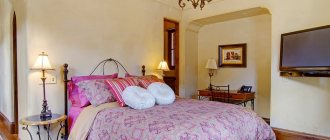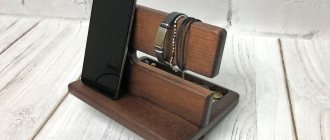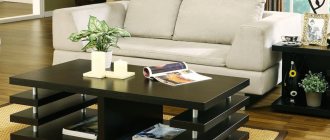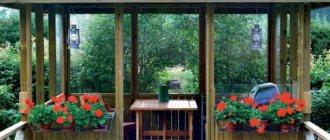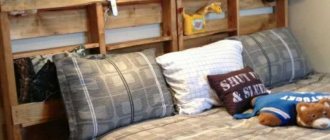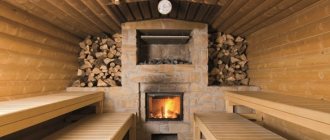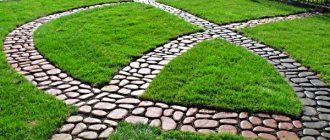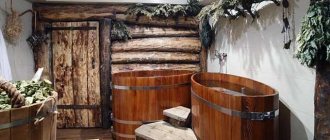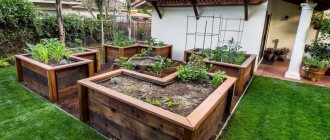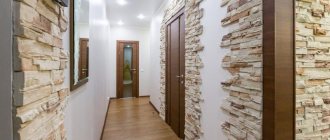Decorative fencing for a summer cottage
Any dacha owner will find in his yard a lot of material reserves suitable for building a fence. You don't need to have any professional skills to do this job.
All you have to do is use your own ideas and get to work. At the same time, the fence can serve as a real fence if it is built over the entire area of the site.
Firing technology
Decorative firing of wood is carried out using devices with a heating element, such as a blowtorch or a hair dryer. Under the influence of high temperatures, the wood heats up, the moisture evaporates, then the fibers dry out slightly and become charred. In this case, the color of the surface of the product changes depending on the intensity and time of exposure. Uniform burning is ensured by perpendicular tangential movements of the devices to the plane of the wood.
This treatment makes the wood more wear-resistant and does not require further processing if the product is used under normal conditions. Otherwise, it is recommended to finish the wood with oil-wax impregnation or varnish to prevent moisture penetration, drying out or cracking.
Japanese way
Wood burning using classical Japanese wood preservation technology occurs using an open fire. Previously, a torch was used for this, but today a technologically advanced gas burner. The fire should be at a distance of 30 cm from the surface of the product, while affecting the wood tangentially. In order for the drawing to appear effectively, the movements when working should be smooth and soft, similar to swinging a brush with paint.
Do-it-yourself wood burning
Do-it-yourself wood burning is an operation that requires skills when working with high-temperature devices. The process of processing timber using fire can be divided into several stages:
- Preparatory. Before firing, it is important to ensure that there are no defects that affect the original appearance of the product. If there are traces of varnish or paint, remove them by sanding, solvent or water. Clean the surface from dust and dirt with a soft brush or lint-free cloth. You should also prepare a workplace, special clothing, glasses and gloves. In home or industrial production conditions, it is important to observe fire safety measures, because firing technology involves working with open fire.
- Basic. Using a device with a heating element (gas burner, hair dryer, blowtorch), process the wood with tangential movements from top to bottom. This should be done evenly, without lingering in one place. Clean the burnt layer horizontally, along the grain, with a brush with coarse bristles or a sander with a fine-grained attachment. To enhance the effect, repeat the operation, cleaning the surface each time.
- Final. After firing, the wood is thoroughly cleaned of dust and ash. If necessary, it is coated with natural oils or chemical impregnating compounds. The tool is checked for serviceability and stored in insulated boxes, separately from flammable materials.
What can a fence be made from?
What can be useful at work? From the list below you can choose a suitable tool that will serve as the main one in the construction of the structure:
- bricks;
- unsuitable rubber cylinders;
- tree;
- willow twigs and so on.
Brick is often used to build a fence. It will be easier to work with it than with other materials.
Everyone knows how to build a brick fence. If you still need this information, use special literary sources.
Wood requirements
You can choose any type of wood for firing, because each sample will show its own unique pattern.
Hardwoods such as red oak, acacia or Caucasian hornbeam, due to their high density, acquire a pronounced dark gray tint when fired. Fibers of soft wood species, such as silver birch, gray alder, and common ash, will show their velvety structure and a bizarre elongated fiber pattern.
Before firing the selected sample, it is important to dry it properly. Make sure the wood's moisture content is no more than 13-15%. It is better to check this value using an electric moisture meter. Pay attention to the appearance of the wood, the presence of chips, scratches, and microcracks. Make sure that the material has not been pre-treated with chemicals. All this can have a detrimental effect on the final result, because the behavior of wood when exposed to high temperatures can be unpredictable. Oils or paint may ignite and cause permanent stains on plastered surfaces. It is better to use freshly harvested timber. In another case, the surface should be sanded to remove the roughened top layer from the product.
Decorative fence made of twigs
It is much more difficult to construct a fence using willow rods as the main material.
To build this fence, you need to prepare oak stakes and willow branches.
Before you start weaving the rods, they should be placed in water for a day. During this time, you can fix oak stakes into the soil, creating a support.
The posts should be at a level similar to the height of the decorative fence (60-100 cm). The depth to which the stakes should be lowered underground should be about 20-30 cm with intervals between them of about 1 m.
When the stakes are planted in the ground and the rods are wet, you can begin weaving. The technology is as follows: the rods should be passed between the stakes so that the first peg is located at the front, and the second at the back of the rod.
In this way, changing the rods among themselves, the fence is weaved. If you want to make a dense tyn, all layers need to be compacted with a wooden hammer.
Solar garden lamps: overview of all types, operating principle, maintenance, design + selection instructionsFencing for garden beds - putting things in order, well-groomed and tidy, the perfect DIY vegetable garden
- A DIY mailbox is a beautiful decoration and a useful addition to a suburban area
Vertical weaving is created in the same way. Then 3-4 additional guides are placed between the stakes. How to weave a fence is up to each person to decide individually.
In any case, a fence made of willow twigs will look unusual and beautiful. The photo shows a finished version of the decorative fence.
Beautiful options for wooden fences
The combination of the original arrangement of the boards and the color scheme looks the most beautiful. The space for creativity here is limitless. These can be boards of different tones, arranged in a checkerboard pattern, stripes or in a geometric pattern.
Painting pickets in different colors is the easiest way to decorate a fence in an original way
A simple wooden fence can be decorated with lattice inserts
Beautiful fence made of horizontal boards with curly cutouts
An interesting combination of “wickerwork” and “checkerboard” in one wooden fence
The use of wood of different colors in a checkerboard pattern works well for checkerboard or wicker fences. Cross alternation of slats of different shades, which creates a geometric pattern, is suitable for lattice fencing. Another option is to place additional slats on the fence in the form of a geometric pattern - rhombuses, squares or sawn wave-like patterns. If the wood is different in color, such a wooden fence will look truly highly artistic and will delight the owners.
A decorative fence made of thick branches is suitable for a rustic-style area
A modern version of a palisade - a bamboo fence
Beautiful artistic execution of a wooden fence
Stone
Of particular interest to outsiders is a stone fence made by hand.
This fence will be a suitable decorative element in landscape design. Natural stone is used in various works, including when laying paths.
By using your imagination, the final result will definitely please you. Various decorative elements will help complement the appearance of the fence - stones, clay vases, etc. To ensure the strength of the fence, it is better to use cement when laying it.
Why is wood burning necessary?
Wood, as you know, is a capricious material. The porous structure of its fibers easily absorbs and retains moisture. Subsequently, the timber swells and cracks appear on them, disrupting the structural properties of the products and their appearance.
In addition, wood, as a material of organic origin, is extremely susceptible to the effects of fungi, mold and bacteria. They destroy the internal layers, changing the mechanical properties: water permeability and impact strength increase, and strength decreases. Often, biological damage to a tree causes a change in the natural color of the trunk, its browning or the formation of a bluish coating.
During the burning of wood under the influence of high temperatures, free moisture contained in the fibers evaporates. The overall volume of the tree decreases, and the melted resin clogs the resin channels. This allows you to increase the strength of the material.
Fire destroys organic compounds of lignin, polysaccharide and cellulose. They are the breeding ground for parasitic microorganisms. Foci of biological damage are destroyed, and the tree becomes resistant to rotting.
In addition, the thermal decomposition of organic elements leads to the removal of flammable pyrolysis gases from the wood, making the material less susceptible to fire.
Firing makes the wood durable, gives it a noble color and emphasizes the refined structure of the fibers.
Slate
Everything is simple here, we take the remains of the slate and dig them into the ground around the flower bed.
The disadvantage of a slate fence is its fragility. However, with its help it is possible to geographically distribute plots among themselves for several years.
Wooden picket fence
A picket fence is a traditional type of fencing that is usually made by arranging boards vertically, with or without gaps between them.
The “checkerboard” described earlier is a special case of a “fence fence” made on both sides. A wooden picket fence has the following advantages:
- ease of installation;
- versatility of style;
- it is possible to make changes to the design after installation of the fence;
- to install a picket fence, you can use any boards: hewn and with knots, planed or roughly cut from wood, processed or unprocessed, with rounded, straight, oblique tops.
When installing a picket fence, you should consider the following nuances:
- pickets (planks, boards from which the fence is made) are placed evenly at equal distances from each other;
- to give originality to the entire structure, the top of the fence can be made wavy;
- If necessary, it is very easy to make “windows” in a picket fence. This will add openness and airiness to the design.
A polycarbonate fence has an attractive appearance and is easy to install. The material began to be used for the construction of household fences relatively recently.
Fences made from corrugated sheets have been popular among summer residents and owners of private houses for many years. How to install such a structure yourself, read here.
When you really need it, neither frost nor snow will be an obstacle to installing a fence. Read about the nuances of building homestead fences in winter in this material.
Brick
This design has great strength. It's easy to make a small fence out of bricks. They should be dug in so that they stand vertically in the ground. In this case, each brick should fit tightly to each other.
If you would like to create a large structure, use your own ideas. Basically, bricks are used to enclose multi-tiered flower beds, paths and ponds. For greater adhesion, brick laying is done using cement.
Types of fences
Traditionally, the main functions performed by various types of fences include:
- securing boundaries;
- protection from attacks by third parties;
- limiting direct penetration of sunlight and winds;
- ensuring privacy;
- decorative.
For the fence, you can use any available material.
For the construction of boundary fences, almost any factory and available materials are used.
Wood and its processing
Wood is an easily processed material available in our country. When properly processed, the natural structure serves as an independent element of site design. Can be painted in any color. But at the same time, wooden fencing is exposed to natural phenomena, and therefore is short-lived.
Wood wins among materials for its ease of processing, naturalness and moderate low cost.
The structure requires annual maintenance (painting, preventing the penetration of insects). Under shock loads, the material quickly becomes unusable.
The following application options are presented:
- Garden picket fence, that is, processed, parallel installed wooden planks. A picket fence can be solid or in the form of a lattice. Can be used for a vegetable garden or recreation area.
- Plank fence. It is distinguished from a picket fence by a continuous method of fastening and the use of both edged and unprocessed boards of approximately the same width.
- Palisade One of the most ancient types of fencing. It consists of wooden stakes tightly adjacent to each other, driven into the ground. The security function is increased by sharpening the upper part of the structural elements.
- Ranch fence. It is represented by fastening timber (boards) in a horizontal plane with large openings between them. It can be made from processed blanks, but this requirement is not necessary.
- Wattle fence. Economical antique fencing that does not require financial costs. It is made by driving stakes into the ground and intertwining them with young shoots of trees and shrubs. A wicker fence made of twigs or vines can become a highlight of the outdoor decor of the site.
Coating wood with protective compounds allows you to preserve the structure of this raw material for many years
To avoid premature aging of wood and its corrosion, be sure to treat it with special compounds or paint the finished structure.
Metal and its derivatives
Metal products are in second place in demand in the manufacture of various fences.
Metal fencing greatly benefits from its practicality and long service life.
They produce beautiful designs, very different in price and aesthetic perception, such as:
- Profiled sheet (corrugated sheeting) is an easily installed metal product with a service life of at least 50 years. Produced in a variety of colors. However, its appearance is simple, and the product is subject to deformation.
- Net. It does not limit the penetration of sunlight into the selected area, but also does not protect from the wind. It is made from metal in several versions: chain-link, corrugated, welded. The chain-link is distinguished from the corrugated weaving method; the second creates a more static plane, for fixing which the distance between the supports can be 5 meters, while with the first - no more than 3 m. The positive characteristics are complemented by the possibility of using a mesh fence as a base for the growth of climbing plants .
- Welded multi-element structure. A huge number of metal decorative elements can be purchased at hardware stores. At home, they are complemented by products made from metal picket fences or poles. The process is labor-intensive, requiring preliminary calculations, and when performed, welding skills. Made for the garden with your own hands, it will bring great aesthetic satisfaction.
- Forged products are the elite in the world of fences. They are divided into utilitarian, cold forged, decorative (in most cases they are made to order) and combined. A small forged fence will emphasize the good taste of the owner.
Forged products emphasize the sophistication of style
Stone and plastic
No less common are fences made from the following materials:
- neatly executed low brickwork serves as an excellent fencing, and its types (clinker, red, silicate) allow it to fit into any design solution for the design of a courtyard;
- natural stone is one of the most durable materials, not subject to the effects of water and sun, but its uneven contours present some inconvenience when constructing a fence made of stones, and are also unsafe for small children;
- metal mesh with natural or natural filler as a border looks impressive - they are voluminous and impressive, installation is simple, but requires time for stone filling;
- the use of eight- or five-wave slate simplifies the task of installing a level fence several times, while installation takes little time, but the material is fragile and dangerous.
Due to their light weight, such fences can be moved to a place of your choice without much difficulty.
The cheapest in cost, but not of aesthetic value, is a series of fences that use improvised means and materials (from bottles, tires, etc.). Design options are limited only by the imagination of the owner of the farmstead, and the use of broken equipment as separate flower beds, for example a broken wheelbarrow, will make the interior exclusive.
Concrete
It is easy to make decorative concrete fences yourself. Before doing this, you need to familiarize yourself with the technology for preparing the solution. Each of its components must be used in the right proportions.
To make a voluminous external fence, a foundation is initially laid. To do this, a trench is dug in the ground, then wooden formwork is installed along its perimeter. The finished box is filled with concrete mortar.
To decorate flower beds, you can make small concrete fences. In this case, foundation construction is not required. The solution is poured into the prepared forms, after which time is given for it to harden. Next, the formwork is disassembled.
The final stage will be planting flowers or perennial plants on a fenced plot of land. Flower beds fenced with concrete fences look great near the front doors of a cottage or private home.
Fencing with horizontal and vertical boards
At the request of the owner of the fenced area, any fence can be made with vertical or horizontal boards.
Most often, the boards are positioned vertically when installing picket fences, checkerboard fences, wickerwork, and palisades.
With horizontal laying of boards, herringbone fences (“ladders”) and “ranch” style fences are made.
A lattice fence belongs to both the first and second types, since it has both horizontal and vertical boards. In the case of an oblique arrangement of the component elements, the lattice fence cannot be classified as one of the two described options.
If necessary, you can make not a horizontal wicker fence, but a vertical one, placing the initial log boards horizontally, and the main ones, on the contrary, vertically.
Metal fence
Metal fencing remains the most popular in the design of summer cottages and cottages. Forged structures vary in shape, height and appearance.
To limit paths in the garden, a metal fence is useful. A large metal fence can serve as a real fence.
This decorative product is sold in specialized retail outlets. If desired, you can make a metal fence to order. The product will last a long period of time as it is highly durable.
How to choose the right material for a fence
First you need to decide on the type of material for the picket fence:
- Unedged board is the cheapest option. The edges of such a picket fence are not cleared of bark. The material parameters are 6 m in length and from 10 to 50 cm in width. Another feature of unedged material is high humidity. To avoid cracking and deformation of the fence, the material must first be dried under natural conditions.
- Edged board - the boards are cut and most often already planed. Edged boards also have a high percentage of humidity and require additional drying. Product dimensions: width - 10 - 15 cm, thickness 2 - 2.5 cm, length 5 - 6 m.
- A finished fence board is the most expensive material that can be used for its intended purpose immediately. The material is dried to an optimal humidity of 12 - 15%. The boards are cut to length - 2, 2.5 and 3 m and sanded.
The finished picket fence can have a straight top cut or a shaped one. Boards with a figured top will cost more.
If you want to save money, you don’t have to choose kiln-dried wood. If the quality of the picket fence is good, it can be dried at home. To prevent the boards from deforming, they are laid on a flat surface and pressed down with something heavy.
Return to contents
Wood species
When choosing wood for fencing, you should choose varieties with a dense structure:
- pine;
- larch;
- alder;
- ash;
- oak.
The most affordable option is pine - it is a fairly reliable and durable wood for a fence. Larch is considered the best, which is twice as expensive as pine, but also surpasses it in durability and strength.
Oak is elite and expensive - it is resistant to moisture, mechanical stress and is practically “eternal”. The oak picket fence looks very solid and has a beautiful wood pattern.
Return to contents
Signs of low-quality wood
Before purchasing, you should carefully inspect the material; the following signs indicate poor quality of the material:
- blackening, blueness and other unnatural staining of the wood surface;
- strong humidity (noticeable to the touch);
- traces of mold;
- cracks;
- remnants of bark (if this is a trimmed version);
- non-standard and non-compliance with the stated parameters;
- large knots;
- uneven cutting surface.
High-quality lumber is distinguished by a light shade and smooth surface. The wood grain should be parallel to the picket fence.
Return to contents
How to make concrete pillars
Decorative fence posts will be a great addition to the cottage design.
Concrete pillars have high strength and long service life. The production of decorative blocks is carried out using the vibration casting technique. Through the use of special forms, it is possible to convey the texture of brick or natural stone on the surface of concrete.
The decorative block includes an internal cavity in which wiring can be carried out and various communications can be hidden.
It is easy to install the pillars: along the circumference of the pipe, sections of concrete are sequentially stacked on top of each other. A cap is placed on the top of the post to protect it from precipitation.
So, a decorative fence looks beautiful on the territory of every summer cottage. This design can be purchased at any of the specialty stores, or you can make it yourself.
Making such a fence yourself will allow you to bring all your ideas to life. The fence can have different shapes, colors and purposes.
Below in the video you can learn more about the options for manufacturing various types of fences.
What types of wooden fences are there?
Types of wooden fences are distinguished both by the material and by the pattern of its installation. Fences are divided according to the type of material:
- From the slab.
- Palisade
- From boards.
Products made from waste from the production of boards or slabs (the remains of a tree trunk, processed only on one side, with semicircular bark on the other) are quite cheap to produce due to the low cost of the material. The gorbel here is attached to the base pillars horizontally. However, the product is difficult to install, since uneven edges of the wood are more difficult to fix. This fence looks very stylish - like an old country fence.
A blind fence made of slab is beneficial when it comes to building an inexpensive and attractive fence with your own hands
A stockade is a fence made from logs with a pointed end. It looks very original and reliable. It has the longest service life - several decades, and is easy to install. However, it has a high cost due to the high cost of the material and its transportation.
A palisade fence is one of the oldest fencing options.
A plank fence is the most common. This is primarily due to the cost of materials and installation, and a large number of design ideas. Many people choose boards precisely because they make many beautiful modifications.
A board fence can look whatever you want.
Photo
For clarity, below for each reader are photos of decorative wooden fences of different options. You can choose one of them or come up with your own design.
Do-it-yourself decorative wooden fences: photo “Wickets”
Fake timber option
Fence “Rancho”
